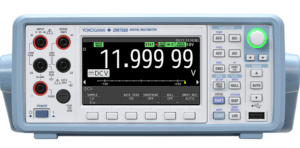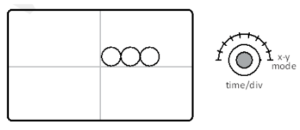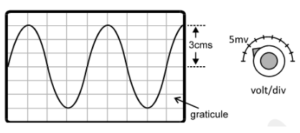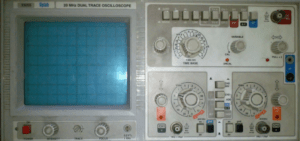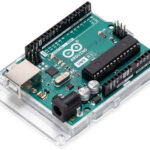Click here to register for summer batches of robotics. Click here for details of courses.
- What is Cathode Ray Tube (CRT)? Explain with diagram
- How deflection system in CRT work? Explain with diagram
- What is fluorescence, Phosphorescence & Persistence in terms of CRT?
- How the circuit of CRO works? Explain working of each block with block diagram
- How to use the front panel controls of Cathode Ray Oscilloscope?
- How to measure AC/DC voltage & current using CRO? Explain with diagrams
- How to measure frequency & phase using Lissajou’s patterns on CRO? Explain with diagrams
- How digital multimeter works? Explain with diagram
Deflection Systems in CRT
The electron beam can be deflected using electric or magnetic field. As per the application of CRT, there are two types of deflection systems used in CRT – the electrostatic deflection system and the magnetic deflection system. They are explained as follows:
Electrostatic Deflection System
In this system, the electron beam is deflected with the help of electric field created between the pair deflection plates. There are four deflection plates in CRT: one pair of horizontal deflection plates and the other pair is of vertical deflection plates.
The plates are made up of copper or aluminium. The vertical deflection plates are fitted horizontally and the horizontal deflection plates are fitted vertically, as shown in the article of constructional details of CRT.
The vertical deflection plates are connected to the input signal (i.e. y-input) which we want to observe on the screen and the horizontal deflection plates are connected to internal sawtooth wave.
Due to this, strong electric field is produced between the plates. When electron beam enters in this field, it is deflected towards the plate which is positive. So the path of beam becomes parabolic. Then the beam comes out of this field in straight line and strikes on the screen at a particular point on the screen. The setup of vertical deflection plates is shown in following diagram –

Definition: The deflection sensitivity of CRT is defined as the deflection on screen in meters per volt of the deflection voltage.
S = D / Ed
Where,
D = deflection on screen in meters
Ed = deflection voltage (Volts)
The more is the PD across the plates, the stronger is the field and so more will be the deflection angle θ of the electron beam.
Magnetic deflection system
In this system, electron beam is deflected using external magnetic field. It is particularly used when we want to deflect the electron beam over a considerable distance on the screen i.e. if the screen dimensions are very large, for example, TV screen.
To create alternating magnetic field two pairs of deflection coils, known as yoke, are fitted on the neck of CRT. The pair of vertical deflection coils is connected to y-input of CRO and the pair of horizontal deflection coils is connected to internal sawtooth wave or external signal at x-input.
The setup of magnetic deflection system used in CRT is given in following diagram –

Applications
Electrostatic deflection is used in slow systems like in CRO, ECG monitors, EEG machines, etc.
The magnetic deflection system is extremely fast. It can deflect electron beam over a very large distance on screen, in extremely short time. So it is used in fast systems like TV, computer monitors (VDU), RADAR system, earthquake monitoring system, etc.



